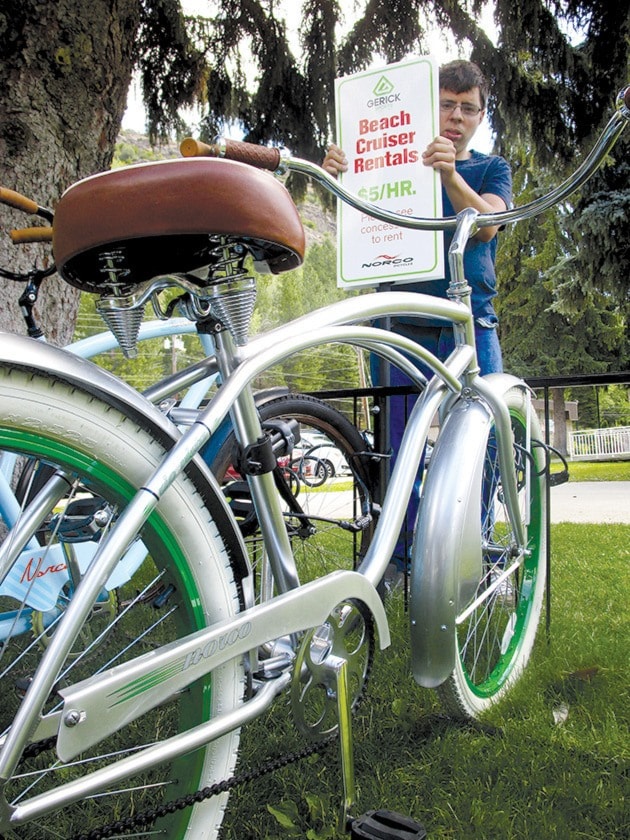Trail Mayor Mike Martin says council’s decision to invest $20,000 in a plan to improve “walkability” and non-motorized travel is in keeping with the city’s foresight in strategic planning.
The plan is twofold and necessary for Trail to compete with other municipalities when it comes to applying for BikeBC grants - this year the province divvied out $6 million in BikeBC funding for communities to enhance and expand infrastructure such as bike lanes, multi-use paths, trails and cycling/pedestrian bridges.
The City of Trail received some serious green from the program last year, an $800,000 grant toward the pedestrian platform component of the pipe bridge, now called the Columbia River Skywalk.
The numbers speak volumes - almost 37,000 cyclists participated in the Bike to Work BC campaign earlier this year That amounted to nearly 1.3 million kilometres racked up in the week long promotion that went from May 30 to June 5.
Rider gender is almost evenly split and in 2016, included 8,000 new participants, which is the most riders ever.
The trend to power with two wheels instead of four is not expected to slow down, so with that in mind, this week Trail council agreed to move ahead with a comprehensive Walking and Cycling Action Plan for the city.
“(This) is very complementary with work that is being done on the pipe/pedestrian bridge,” Martin told the Trail Times. “We have some plans for integration of walkways in the immediate vicinity but how do we integrate that in a broader concept,” he added. “What was agreed is that we really needed a strategic plan identifying logical components that we can move forward with in the future, and more importantly, put us in a position to have firmly established plans that can be executed on fairly short notice if we are successful in pursuing funding opportunities.”
The initial scope of work includes a conceptual plan similar to, but also supportive of the Wayfinding Signage Strategy, notes Chief Administrative Officer David Perehudoff.
Insight through public consultation with locals, businesses and visitors would be critical to decisions about city-supported improvements to the walkability of neighbourhoods and connectivity with regional trails and downtown.
“Having better links in place will help encourage more people to walk or cycle and open up opportunities for employment tourism and recreation,” he said. “This reduces traffic congestion, parking demands, and greenhouse gas emissions, while promoting healthy living … a balanced transportation system that includes walking, cycling, transit and vehicles provides people with appropriate transportation choices to get to their ultimate destination.”
BikeBC is the province’s cost-sharing program that helps communities build cycling projects that promote active, healthy communities and attracts commuter and tourism cyclists.
Earmarking the bridge as a section of the coast-to-coast trail also played into the city’s large grant. Over the years, rugged terrain, private property impasses and high costs have been obstacles for Trail becoming a stop over on the (TCT) Trans Canada Trail.
City council, Kootenay Columbia Trails Society and others involved in project development expressed concern that Trail could be bypassed on the route.
The trail was originally mapped to come through the city, but securing right-of-ways liabilities and finalizing the route through town put the city’s mark on the TCT into question. After exchanging correspondence with the trail’s development manager, David Perehudoff, Trail’s chief administrative officer, said keeping the city in the loop was a priority for planners.
A development in the plan was the possibility of including the pedestrian pipe/bridge on the route, he added.
